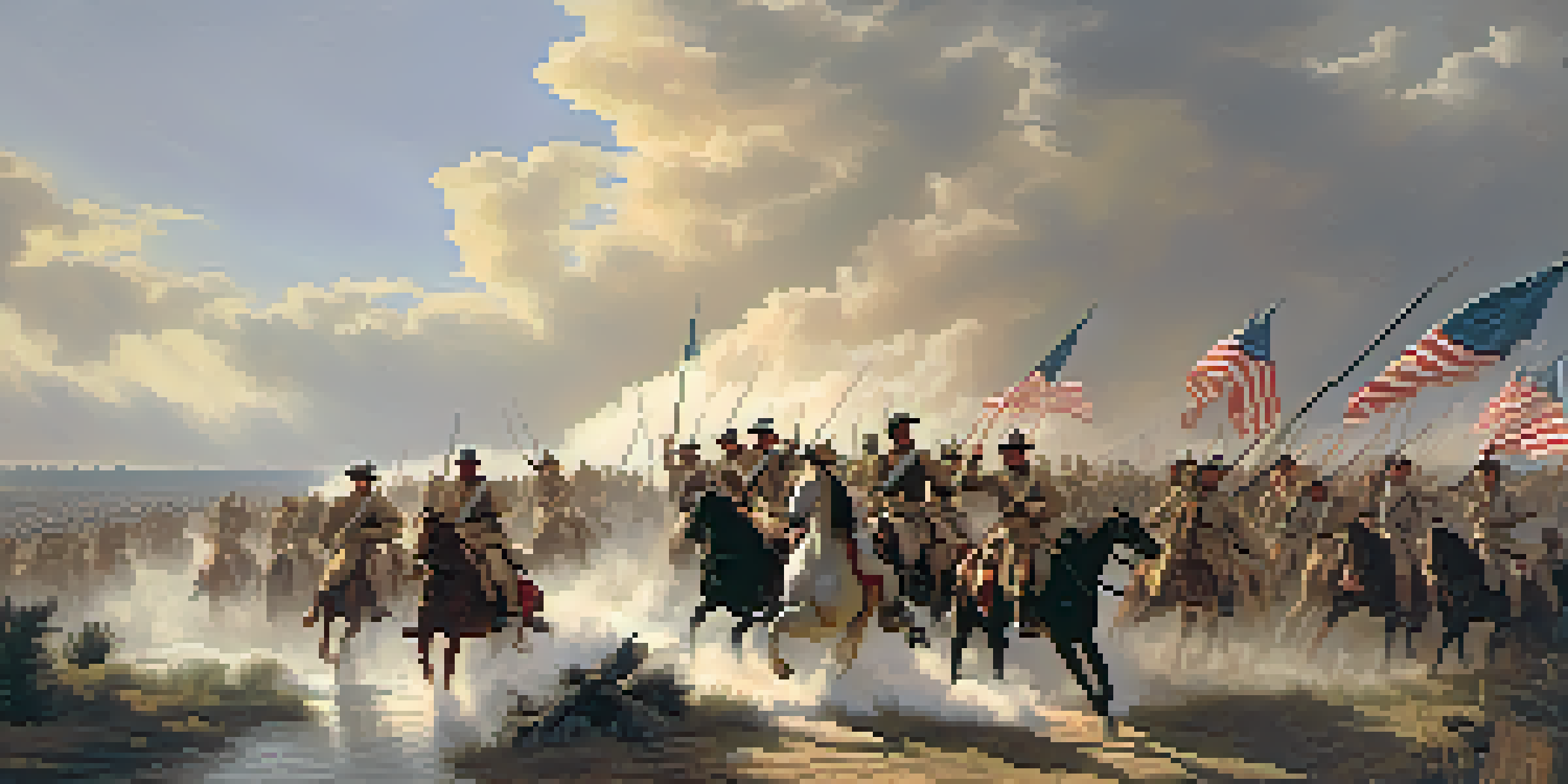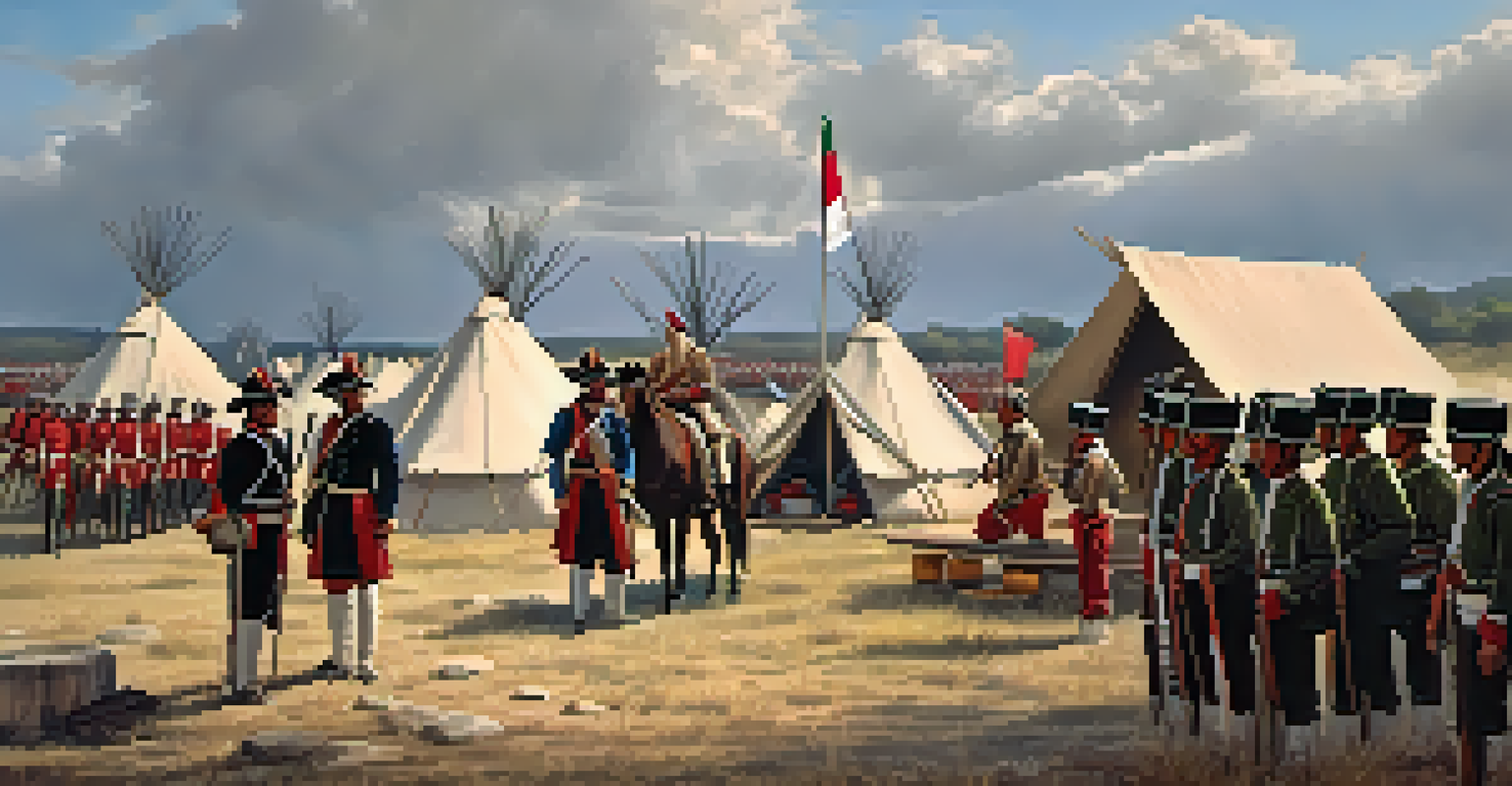Battle of San Jacinto: A Key Event in Texas Independence

Background: The Road to Texas Independence
The seeds of Texas independence were sown in the early 1830s, as tensions rose between Texan settlers and the Mexican government. Many American immigrants had settled in Texas, drawn by the promise of land and opportunity. However, by the early 1830s, they began to feel stifled by increasing Mexican control and restrictions. This growing discontent laid the groundwork for a push toward independence that would culminate in the Battle of San Jacinto.
The Alamo is a symbol of the fight for independence and freedom, and the Battle of San Jacinto was the defining moment that sealed that fate.
The situation escalated further when Santa Anna, the president of Mexico, imposed stricter laws, which fueled resentment among Texan settlers. The Texians, as they called themselves, were determined to assert their rights and push back against these measures. As calls for independence grew louder, a series of skirmishes broke out, indicating that a full-scale conflict was on the horizon. All these factors created a ripe environment for rebellion, setting the stage for the decisive battle ahead.
In 1835, the Texian Revolution officially began, with pivotal events such as the Siege of Bexar. However, it was the defeat at the Alamo in March 1836 that galvanized Texian forces, igniting a fierce desire for vengeance. The loss at the Alamo became a rallying cry for those fighting for Texas independence, leading to the eventual confrontation at San Jacinto. Understanding this backdrop is essential to grasp the significance of what was to come.
Key Figures: Sam Houston and Santa Anna
At the forefront of the Texian forces was Sam Houston, a charismatic leader who had previously served in the U.S. Congress. He was known for his strategic mind and ability to unite disparate factions to fight for a common cause. Houston's leadership was crucial as he rallied his troops and devised a plan to confront the Mexican army decisively. His determination and experience would prove vital on the battlefield.

On the opposing side was General Antonio López de Santa Anna, an ambitious leader who sought to assert Mexican control over Texas. Santa Anna was confident, believing his forces could easily crush the rebellion. He was known for his ruthless tactics, but his overconfidence would ultimately lead to his downfall. The contrast between Houston's strategic patience and Santa Anna's impulsiveness would play a significant role in the unfolding conflict.
Texas Independence Sparked by Conflict
Growing tensions between Texan settlers and the Mexican government in the 1830s set the stage for a push toward independence.
Both leaders represented more than just themselves; they embodied the larger struggle between the Texians and the Mexican government. As the two sides prepared for battle, the stakes could not have been higher. The outcome of this confrontation would not only determine the fate of Texas but also shape the future of the entire region.
The Build-Up to the Battle of San Jacinto
As April 1836 approached, the Texian army was growing increasingly aware of the imminent confrontation with Santa Anna's forces. After the Alamo, Houston knew he had to act quickly to rally his troops and build morale. He began a strategic retreat, buying time while gathering reinforcements and supplies. This retreat was not a sign of weakness but rather a calculated move to position his forces for a strong offensive.
In Texas, we have a saying: 'Remember the Alamo!' It’s more than just a battle cry; it symbolizes our determination to fight for our rights and independence.
During this time, Santa Anna was overconfident, believing he had already crushed the Texian resistance. He split his forces, which would ultimately prove to be a critical mistake. The Texian army, although smaller in numbers, was motivated by a fierce desire for independence and revenge. As the two armies prepared for battle, the tension in the air was palpable; both sides knew that this clash would determine the future of Texas.
On April 21, 1836, the stage was set for one of the most significant battles in American history. With Houston's forces positioned near the San Jacinto River, the Texians were ready to make their stand. The Texian troops, fueled by their spirit and determination, were about to engage in a crucial conflict that would change the course of their destiny.
The Battle: A Turning Point in History
The Battle of San Jacinto commenced on the afternoon of April 21, 1836, when Houston launched a surprise attack on Santa Anna’s camp. The Texian troops, despite being outnumbered, charged forward with fierce determination, shouting 'Remember the Alamo!' This rallying cry served as both motivation and a reminder of the stakes involved. The element of surprise caught Santa Anna's forces off guard, leading to a chaotic and swift engagement.
Within just 18 minutes, the Texian army achieved a stunning victory, overwhelming the Mexican troops. The battle was fierce but brief, with many Mexican soldiers taken by surprise and quickly surrendering. Santa Anna himself was captured the following day, which signaled a significant turning point in the fight for Texas independence. The swift nature of the battle changed the momentum entirely in favor of the Texians.
Sam Houston's Strategy Wins Battle
Sam Houston's strategic leadership during the Battle of San Jacinto led to a decisive victory against Santa Anna's forces.
The victory at San Jacinto was not just a military triumph; it was a defining moment in the quest for Texas independence. It demonstrated the power of determination and unity in the face of oppression. This battle would not only lead to Texas gaining independence but would also have lasting implications for the future of the region and the United States.
Aftermath: Texas Independence Declared
In the wake of the Battle of San Jacinto, the Texian forces quickly capitalized on their victory. Santa Anna was forced to sign the Treaties of Velasco, which recognized Texan independence. This act was monumental, as it marked the beginning of a new republic in the heart of what would become the United States. The excitement and relief among Texians were palpable, as they celebrated their hard-won freedom.
However, the aftermath of the battle was complex. While Texas was now independent, the region remained a point of contention between Mexico and the United States. The victory at San Jacinto did not erase the tensions that had led to conflict in the first place. The political landscape was shifting, and questions about the future of Texas and its relationship with Mexico loomed large.
Nevertheless, the victory at San Jacinto ignited a spirit of nationalism and pride among Texians. They began to build their government and establish their identity as a new nation. This pivotal moment laid the groundwork for what would eventually become the Republic of Texas, a key player in the westward expansion of the United States.
Legacy: The Impact of San Jacinto
The Battle of San Jacinto remains a cornerstone of Texas history and identity. It is celebrated annually on San Jacinto Day, commemorating the courage and determination of those who fought for independence. The victory is etched in the collective memory of Texans, serving as a symbol of resilience and the fight for freedom. The phrase 'Remember the Alamo' has become synonymous with the spirit of Texas independence.
Beyond Texas, the battle also had significant implications for the broader United States. The victory encouraged the idea of Manifest Destiny, the belief that Americans were destined to expand across the continent. It highlighted the tensions between the United States and Mexico, paving the way for future conflicts, including the U.S.-Mexican War. The repercussions of San Jacinto would reverberate beyond Texas, influencing the course of American history.
San Jacinto's Lasting Legacy
The Battle of San Jacinto not only secured Texas independence but also influenced the broader narrative of American expansion and identity.
Ultimately, the Battle of San Jacinto represents more than just a military conflict; it embodies the struggle for self-determination. It serves as a reminder of the sacrifices made by those who fought for their beliefs and the importance of standing up for one's rights. The legacy of this pivotal event continues to inspire generations, encouraging people to reflect on the values of freedom and independence.
Conclusion: Remembering San Jacinto
As we reflect on the Battle of San Jacinto, it's essential to remember the key figures and events that led to Texas independence. This battle is not just a chapter in history; it is a testament to the human spirit's resilience in the face of adversity. The stories of those who fought on that fateful day remind us of the importance of unity and courage in pursuing freedom. Their legacy continues to shape Texas identity and pride.
The lessons learned from San Jacinto resonate today, reminding us that the fight for independence and rights is ongoing. While the battle concluded in victory for the Texians, it also opened the door to new challenges and complexities in the region. Understanding this historical context allows us to appreciate the significance of the struggle for independence and its lasting impact on the modern world.

In celebrating the Battle of San Jacinto, we honor not just the events that transpired but the enduring values of freedom, resilience, and community. As Texans and Americans, we carry forward the spirit of those who fought for independence, ensuring that their sacrifices are never forgotten. The battle may have been fought over a century ago, but its lessons remain relevant as we navigate our paths toward justice and liberty.